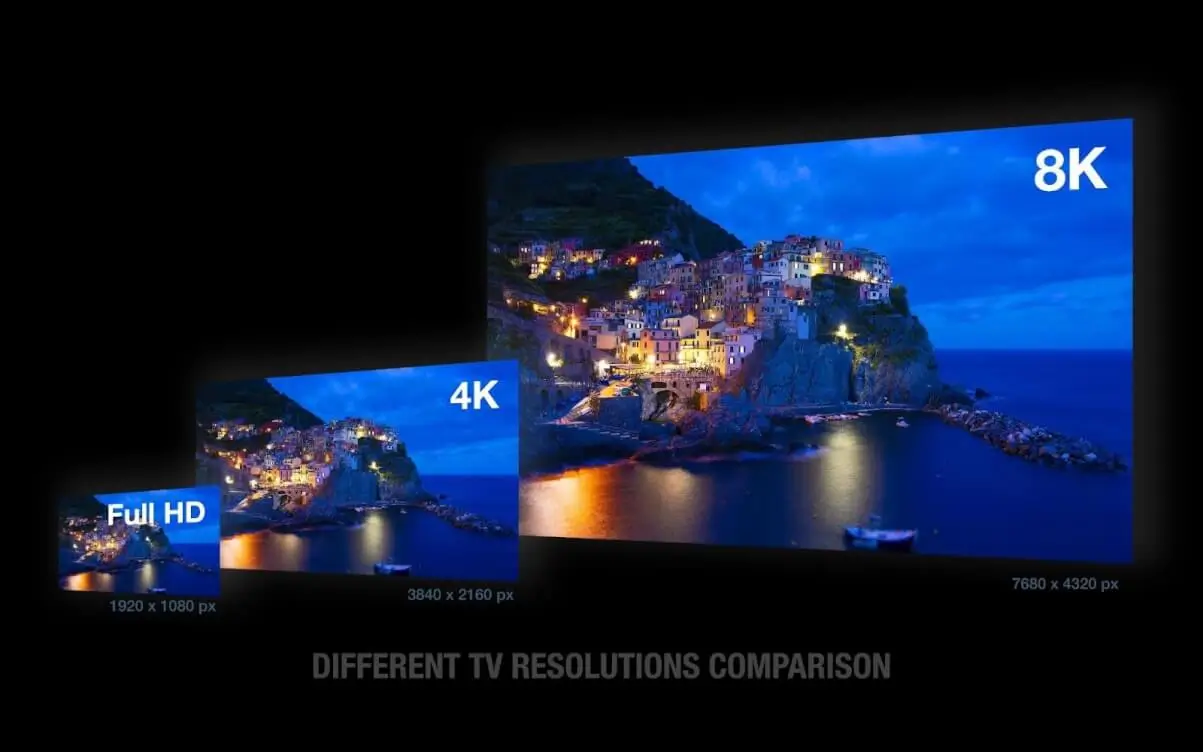What is 4K Resolution – A Beginner's Guide

- What is 4K Definition?
- 4K vs. UHD Resolution
- Why Should You Use 4K Resolution?
- Is 4K the highest resolution?
- The Future of 4K Technology
We constantly hear 4K, HD, and QHD from everywhere, but not many understand the intricacies of what these abbreviations mean outside the video quality trait. This guide aims to define what is 4k screen resolution and compare it to UHD for differences with other known quality definitions on the board.
What is 4K Definition?
To understand what is 4K quality, let us define resolution first. Resolution is a number of pixels on the screen that represent image or video quality. Pixels stand for picture elements which are the smallest unit of an image. To constitute the visual, millions of pixels are combined. The more pixels are on the screen the higher their density the higher the quality definition and the more detailed the image is. In the case of 4K, this means a generic number of approximately 4 thousand pixels (4,000).

4K vs. UHD Resolution
4k display resolution is not exactly 4,000 pixels, because there are two types of 4K definitions. For TV terms, 4K is actually 3840 x 2160 pixels and sometimes 3840 x 2400 which is called UHD Resolution (Ultra High Definition). It's slightly lower in resolution horizontally compared to true 4K, but it's still considered within the 4K category due to its pixel count. Meanwhile, digital cinema uses NATIVE 4K which is 4096 x 2160.

In the realm of projection, the distinction between 4K UHD and native 4K lies in the employment of pixel-shift technology. Native 4K, operates straightforwardly: a 4K input undergoes pixel-by-pixel processing to yield a 4K output. This ensures an unadulterated transfer of image information, devoid of quality loss or compensatory adjustments.
Contrarily, pixel-shifting technology introduces a different approach. Here, a native 4K input is segmented into multiple lower-resolution pixel fields, each containing a subset of the original image's pixels. These segmented images are then manipulated through an actuator, swiftly displaying them offset from one another. Consequently, the screen presents a quasi-lossless amalgamation of the 4K UHD image, comprising a total of 16 million pixels.
Why Should You Use 4K Resolution?

The allure of 4K resolution lies in its ability to render visuals with striking clarity and lifelike detail. However, achieving optimal 4K experiences involves more than just pixel count – it necessitates a comprehensive approach from content sourcing to final display.
In this regard, lots of content on YouTube and other video hostings are still in 1080p which stands for High Definition or HD. HD gives several advantages such as less storage space utility and less CPU and GPU performance demand. On the other hand, when you put 1080p on a display of bigger dimensions, you will see how the image stretches to the point that you may find individual pixels on it. This is why 4K is more beneficial as having greater potential for bigger formats and screens providing more details to the image and footage.
Is 4K the highest resolution?
4K format is common among TV and home cinema users. It is a standard for high quality on big screens. However, it is not a limit. Modern graphic cards allow you to record footage and do photos in 8K which is 7680 x 4320 or over 30 megapixels. But that is the least popular option due to high-performance demands from hardware.
The Future of 4K Technology
As of 2024, the transition from 1080p to 4K resolution is ongoing, reflecting a broader shift towards higher-definition content. Streaming giants like Netflix have embraced 4K as a standard offering, enhancing the viewing experience for their subscribers. However, traditional TV broadcasts have been slower to adopt this trend, though channels for 4K shows are gradually being introduced.

Despite the momentum behind 4K, challenges persist, particularly concerning bandwidth requirements. The sheer volume of data involved in transmitting 4K content poses a bottleneck, especially considering the limitations of current network infrastructure. The recommended bitrate for 4K format typically ranges from 35 to 60 Megabytes per second, which not all internet service providers can reliably deliver to users.
Looking ahead, the momentum toward 4K adoption is expected to continue, with hardware manufacturers, streaming platforms, and service providers aligning themselves with this evolving standard. Moreover, there's speculation about the possibility of moving beyond 4K to embrace even higher resolutions like 8K in the future.

Author
Founder of VJump. In addition to business, he is passionate about travel photography and videography. His photos can be viewed on Instagram (over 1 million followers), and his films can be found on his YouTube channel.
Moreover, his profile is featured on the most popular and authoritative resource in the film industry — IMDb. He has received 51 international awards and 18 nominations at film festivals worldwide.








































































